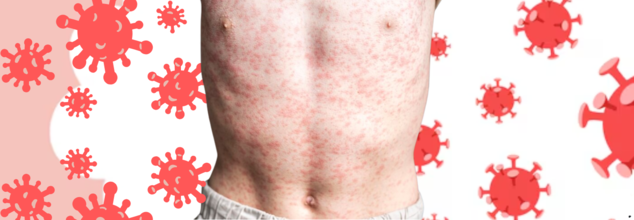- Health Conditions A-Z
- Health & Wellness
- Nutrition
- Fitness
- Health News
- Ayurveda
- Videos
- Medicine A-Z
- Parenting
- Web Stories
NHS Doctor Warns Social Media About THIS Habit ‘Same As Smoking More Than 100 Cigarettes’

(Credit-Canva)
Social media has proven to be a great tool for valid sources to spread necessary information. One such piece of information that came from the NHS (National Health Services) doctor Dr. Suraj Kukadia on Instagram about Shisha.
The British Heart Foundation explains that Shisha has become a popular habit among the UK locals, many of whom do not know how dangerous it is. In the video shared by the NHS Dr. Kukadia is telling people that even a short session of smoking shisha can be very harmful, one thing people must know about this habit is that Shisha is extremely addictive. This warning is important because many people, especially young adults, are starting to use shisha without knowing the real risks. The doctor's message is clear, shisha can cause serious health problems.
What Is Shisha?
Shisha is a way of smoking tobacco using a special water pipe. The smoke goes through water before you breathe it in. People often smoke shisha in groups, thinking it's a social and safe activity. However, this is not true. Shisha contains tobacco, which has harmful substances like nicotine and tar. These substances can damage your body. Even if the shisha doesn't have tobacco, it can still produce harmful smoke. This makes it dangerous for anyone who uses it.
Why Is Shisha Worse?
In the video Dr. Kukadia explains that smoking anything, including shisha, can lead to serious illnesses. These illnesses include heart problems, lung diseases, and even cancer. He wants people to know that the idea of shisha being safer because the smoke goes through water is just a myth. The British Heart Foundation has found that smoking shisha for just one hour is like smoking a huge number of cigarettes. This can make you very sick and cause long-term health problems. It is important to know that there is no safe way to smoke.
The British Heart Foundation explains when you smoke shisha, the harmful chemicals get into your body and damage your blood vessels. These chemicals can make your arteries sticky, which allows fat to build up inside them. This can lead to serious problems like heart attacks and strokes. Shisha can also damage your lungs and cause breathing problems. It's important to know that shisha is just as dangerous as cigarettes, and it can cause the same kinds of diseases. Even being around someone smoking shisha can be harmful because of the second-hand smoke. This smoke can stay in the air for a long time and affect everyone in the room.
How To Quit Shisha?
If you're using shisha and want to quit, there are many ways to get help. The NHS offers free services to help people stop smoking. These services can provide you with medication and support from experts. You can also find information online or call a helpline. Talking to a doctor can help you understand the risks and make a plan to quit. Quitting smoking is one of the best things you can do for your health. There are many resources available to help you, and you don't have to quit alone. Remember, it is never too late to quit, and you will see health benefits quickly after you stop.
US Faces Biggest Measles Spike In Three Decades- What’s Driving The Surge?

Credits: Health and me
The United States is experiencing its largest and most significant measles outbreak in over 30 years. With 1,168 cases confirmed in 34 states through early June 2025, the country is poised to exceed the 2019 outbreak total of 1,274, putting the measles elimination status America gained in 2000 at risk.
The recent surge is more than four times the number of cases that were reported in 2024 (285 cases), an alarming trend that public health officials warn can be exacerbated if not addressed immediately.
As of data provided by the Centers for Disease Control and Prevention (CDC), measles have already been reported in 34 states, which include densely populated areas like California, Texas, Florida, New York, and Illinois, as well as relatively more rural states like South Dakota, Montana, and Vermont. Particularly, Texas registers 742 cases, with almost 100 hospitalizations, though the transmission there has dwindled in recent weeks.
The CDC has identified 17 separate outbreaks, a rapid increase from the 16 that occurred throughout all of 2024. The outbreaks have caused 89% of all reported cases of measles this year, indicating that clustered exposures — frequently due to travel or regional vaccine refusal — are responsible for driving the surge.
The demographic statistics tell an unmistakable story of vulnerability:
- 5 to 19 years of age comprise 38% of total cases
- Adults comprise 33%
- Children under the age of 5 years comprise 29%
Alarmed, 95% of cases were either unvaccinated or their vaccination history was unknown. Just 3% of individuals who were infected had both doses of the measles, mumps, and rubella (MMR) vaccine.
Three fatalities have already been confirmed: two in unvaccinated school-age children in Texas with no pre-existing health condition, and one in New Mexico, that of an unvaccinated adult. These sad incidents highlight how dangerous the illness can be, particularly when preventable by vaccination.
Is Decreasing Vaccination Rates Spurring the Surge?
The CDC advises two MMR doses—one at 12 to 15 months, and a second at 4 to 6 years. The two-dose regimen is 97% effective against measles. However, coverage is falling below thresholds critical to herd immunity:
Only 92.7% of kindergartners across the country got both doses of MMR in the 2023–2024 school year.
This is down from 93.1% the year before and 95.2% in 2019–2020 (pre-pandemic levels).
In some communities, coverage falls well short of herd immunity levels, allowing outbreaks to take hold.
Routine immunization programs were severely disrupted during the pandemic years, and residual vaccine hesitancy driven by misinformation has widened the gap further.
How International Travel and Global Outbreaks Are Contributing?
This year's surge has a very international element, with several new U.S. cases attributed to travelers returning from nations currently struggling with their own measles outbreaks. For example:
A teenage tourist in Virginia transmitted the virus to a child under 4 years old.
The same trend was observed in Georgia, where an unvaccinated local caught measles from an infected family member who was a tourist in a foreign country.
Across the globe, Canada is having a bigger outbreak with 2,755 cases, almost 2,000 of them in Ontario province alone. Sadly, the nation reported its first measles fatality of the year—a premature baby born to an unvaccinated woman. The UK Health Security Agency also made warnings prior to the summer travel season, warning that increasing case loads around the world could lead to further transmission.
Measles is one of the most infectious diseases known to mankind. The CDC states that a person infected with the virus can infect 9 out of 10 close contacts if the contacts are not immunized or are immune-deprived.
Symptoms of cough, runny nose, rash, and high fever may appear manageable—but the effects are dire. At risk are:
- Pneumonia
- Encephalitis (inflammation of the brain)
- Blindness
- Death, especially among children and immunodepressed persons
Because of these risks, measles continues to be a high-level threat, especially where vaccination levels drop below herd immunity levels (traditionally deemed to be close to 95%).
Is There A Way To Slow Down The Upward Trend?
Federal, state, and local health officials are stepping up to:
- Boost vaccination levels, particularly for school-age children
- Initiate public awareness campaigns to counteract vaccine misinformation
- Enforce stronger immunization requirements in schools and public institutions
- Strengthen port of entry and domestic travel hub surveillance and outbreak response
Experts emphasize that measles elimination remains within reach — but only if immediate action is taken to address the recent downturn in immunization confidence and expand access in underserved communities.
The return of measles in the United States is a wake-up call, not only for this country but also internationally. A disease that was declared eliminated is now re-emerging almost entirely because of preventable reasons such as vaccine reluctance and international travel in a world that is still coming out of COVID-19's shadow.
The current trajectory of data strongly implies that, absent of immediate public health measures, the U.S. might soon record its highest number of measles cases for any given year since 1992—a chastening moment for a country that was once at the forefront of measles control.
This Drink Plays A Vital Role In Keeping Women Sharp As They Age

(Credit-Canva)
Your daily cup of coffee might offer more than just a morning pick-me-up; it could actually influence how well you age. A new study, done by researchers in the Harvard T.H. Chan School of Public Health, involving nearly 50,000 women, investigated the long-term effects of drinking tea, coffee, and cola. The research found that coffee, specifically caffeinated coffee, can positively impact women's mental and physical health as they get older.
How Coffee Might Help Older Women
Researchers discovered that drinking coffee regularly could help women stay mentally sharp, physically strong, and generally well as they age. But, these good effects were only seen with coffee that had caffeine. People who drank decaf coffee didn't get the same benefits, and neither did tea drinkers. Even worse, the study found that women who drank soda had a "much lower chance of aging healthily."
Researchers said that while past studies linked coffee to certain health outcomes, her study is the first to look at how coffee affects many parts of aging over 30 years. She added that the findings suggest caffeinated coffee, unlike tea or decaf, might uniquely help people age in a way that keeps both their mental and physical abilities strong. These results were shared at a big meeting for nutrition experts.
What the Study Looked At
Researchers said that study was strong because it included many people and followed them for 30 years. They also looked at different ways people age well and collected lots of details about their eating and lifestyle habits every four years.
The researchers looked at information from nearly 47,513 women who were part of a long-term health study since 1984. They figured out how much caffeine these women consumed by asking about their intake of common caffeinated drinks like coffee, tea, soda, and decaf coffee.
They defined "healthy aging" as living to age 70 or older, not having 11 major long-term diseases, being able to move well, having good mental health, not having thinking problems, and not complaining about memory issues. After 30 years, the team estimated how the chance of healthy aging changed for every 80 mg of caffeine (about one small cup of coffee) that people drank daily.
They also looked at specific drinks. Their early analysis also considered other things that could affect healthy aging, such as body weight, smoking, drinking alcohol, physical activity, education level, and how much protein was in their diet. The data showed that by 2016, 3,706 of the women met all the requirements for healthy aging. In their middle age (45-60), these women typically drank about 315 mg of caffeine per day. This is roughly the amount in three small cups of coffee or one and a half large cups by today's standards. More than 80% of that caffeine came from regular coffee.
Regular Coffee vs. Other Drinks
For the women who aged healthily, each extra cup of regular coffee per day was linked to a 2% to 5% higher chance of doing well in later life. This benefit went up to about five small cups of coffee per day (or about 2.5 cups using today's sizes). The scientists found no clear link between drinking decaf coffee or tea and a higher chance of healthy aging. However, every extra small glass of soda was linked to a 20% to 26% lower chance of healthy aging. This shows that not all caffeine sources are good for you.
An Afternoon Nap Could Cost Middle-Age People Years Of Their Life

Sleep hygiene is something we should all keep up with constantly. While you may think you can skimp on sleep, your body needs it to keep functioning properly. Not only does sleep help us make sure our body runs all its functions smoothly, but it also keeps a sleep debt. Losing an hour of sleep may not seem like much, but your body requires 4 hours more to make up for that lost hour of sleep. Understanding this, many people opt for afternoon naps that span a few hours to help them recover lost energy. However, these naps are also not all safe for your health, especially for older adults.
An afternoon nap might seem like a good idea for middle-aged and older adults, but these short rests could actually come with a significant cost. New research suggests that certain napping habits might increase the risk of an early death. These findings are expected to be presented at an upcoming meeting of the American Academy of Sleep Medicine (AASM).
Napping Patterns and Early Death
Researchers explained that people who slept longer during the day, had irregular napping schedules, or napped more around midday and early afternoon faced a greater risk. This was true even when other health and lifestyle factors were considered. These findings challenge the popular idea of the "power nap."
For the study, researchers looked at information from over 86,500 people taking part in the UK Biobank, a long-term health research project. The sleep habits of these individuals were tracked for a week using wrist devices, and then researchers compared these habits to death records. On average, the participants were 63 years old when their napping was monitored.
What Did The Research Find?
Over an 11-year follow-up period, nearly 5,200 people in the study passed away. The results showed a higher risk of dying sooner for:
- People who usually took longer naps during the day.
- Those whose napping times changed often.
- Individuals who napped between 11 a.m. and 3 p.m.
This last point goes against current AASM guidelines, which suggest that adults limit themselves to "power naps" of no more than 20 to 30 minutes in the early afternoon. Researchers noted that naps longer than half an hour can actually make you feel groggy, canceling out any potential benefits.
What Does Healthy Sleep Look Like For Different Ages
According to the Mayo Clinic, healthy sleeping patterns differ according to age. The recommendations give are,Infants (4 to 12 months): Aim for 12 to 16 hours within a 24-hour day, including naps.
Toddlers (1 to 2 years): They need 11 to 14 hours in 24 hours, including naps.
Preschoolers (3 to 5 years): Target 10 to 13 hours within a 24-hour period, including naps.
School-aged Children (6 to 12 years): 9 to 12 hours every 24 hours is ideal.
Teenagers (13 to 18 years): 8 to 10 hours within a 24-hour period is recommended.
Adults: Most adults need 7 or more hours of sleep each night.
Other Factors Affecting Your Sleep Needs
Besides age, several other things can influence how much sleep you require,
Sleep Quality
It's vital not just how long you sleep, but how soundly. Frequent interruptions mean poor quality rest. Getting truly restful sleep is equally important as the total hours.
Previous Sleep Debt
If you haven't been getting enough sleep lately, your body needs extra rest. You'll have to make up for lost sleep to feel refreshed and function well.
Pregnancy
Hormonal shifts during pregnancy can make sleep difficult. Physical discomfort also contributes to poor sleep quality, leaving expectant mothers feeling less rested than usual.
Aging
While older adults need similar sleep amounts as younger adults, their sleep patterns change. They might sleep lighter, take longer to fall asleep, wake up more often, and have shorter sleep cycles at night.
© 2024 Bennett, Coleman & Company Limited

